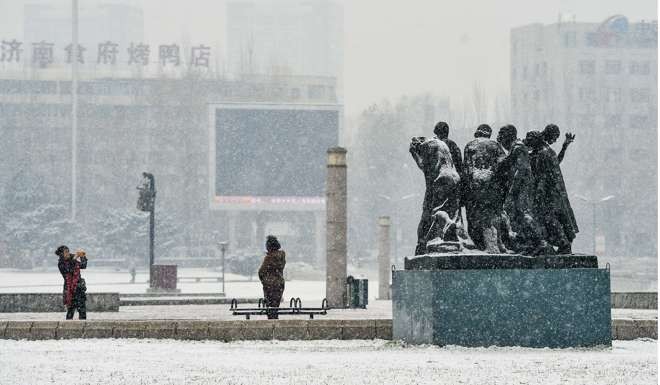
China’s depressed northeast is down but not out – if officials can fix its ailing state-owned firms
Yansong Wang says though now in a deep funk, the vast northeast was once an economic powerhouse, and can be again with the right policies
Over the course of my 35 years, China’s northeast has gone from being the country’s economic powerhouse to its most systematically troubled large region. Much of the region’s enormous state-owned industrial complex is in difficulty, while gross domestic product growth continues to lag. The deepest and most poignant signs of the economic malaise are a falling population and the fact that the northeast’s birth rate is now one-third below the national average.
The concern about how to revive the economy animates not only the highest levels of the central government, but also many people who recall the key role the region has played leading China’s modernisation. The concern is warranted. It now needs to be matched by some fresh thinking and new policy initiatives. I’d like to see the northeast become a laboratory for bold ideas about how to restructure state-owned enterprises in China.
Analysts raise red flag as China’s state sector reverses nearly 20 years of declines in the share of economy
I care deeply about what happens in the northeast. Though I now live and work in Shenzhen, I was born and raised in Jilin (吉林) province. My parents and 95-year-old grandmother still live there. I owe a lot of my life’s achievements up to now – undergraduate study at the University of Science and Technology of China in Hefei (合肥), followed by a PhD in physics from Princeton, to my current role in an international investment bank – to the mind-expanding public education I received growing up in the northeast.

China calls for new private bank to rejuvenate rust-belt northeast
The climate and its mainly landlocked geography are a challenge. But there is no reason the northeast should be a victim of its geography. The part of the US with the most similar conditions, the states of Minnesota, Michigan and Wisconsin, has successfully moved away from a focus on heavy industry to being a world leader in all kinds of advanced manufacturing and food processing. Great companies, including 3M, Cargill and Amway, all hail from this part of the US.
Could my home region produce its own world-conquering companies? I believe so.
Step one is to reorient investment capital away from the tired and often loss-making state-owned enterprises towards newer, nimbler private-sector firms. At present, too much investment goes to one of the most unproductive uses of all: new loans to companies that can’t repay their existing ones. This kind of rollover lending generally does not produce one new job or one new increment of GDP.

How do we go from being a tired rust belt to a rejuvenated region pulsing with opportunity? The central and provincial governments should encourage more experimentation to push forward the scope and pace of state-owned enterprise reform. A starting point: banks could shoulder more of the cost of restructuring state firms. That will allow for new forms of mixed ownership, asset sales, and bigger and more effective debt-for-equity swaps.

Can Beijing revive China’s ailing rust belt?
I would also like to see the northeast become the first place where service industries, now mainly restricted to state firms – including banking and insurance – are opened up to private competitors.
There is no shortage in the northeast of the most important facilitator of economic development: a well-educated population. For now, sadly, too many of the entrepreneurially inclined leave the region. Indeed, two of the most visionary listed company chairmen I know are, like me, Jilin natives now living in Shenzhen, Gao Yunfeng of Han’s Laser and Xin Jie of Tagen Group. We need to create the conditions where the younger versions of these two successful entrepreneurs choose to stay in the northeast and build an economic future there that we can all take pride in.
Dr Yansong Wang is chief operating officer at China First Capital
